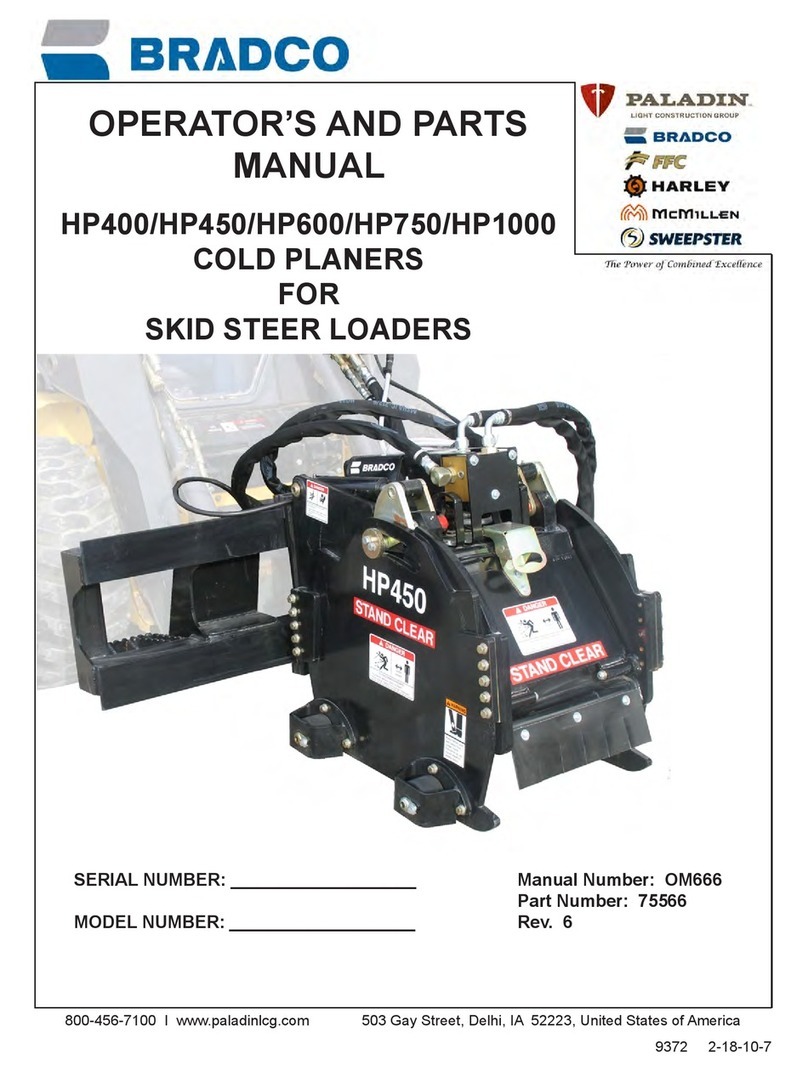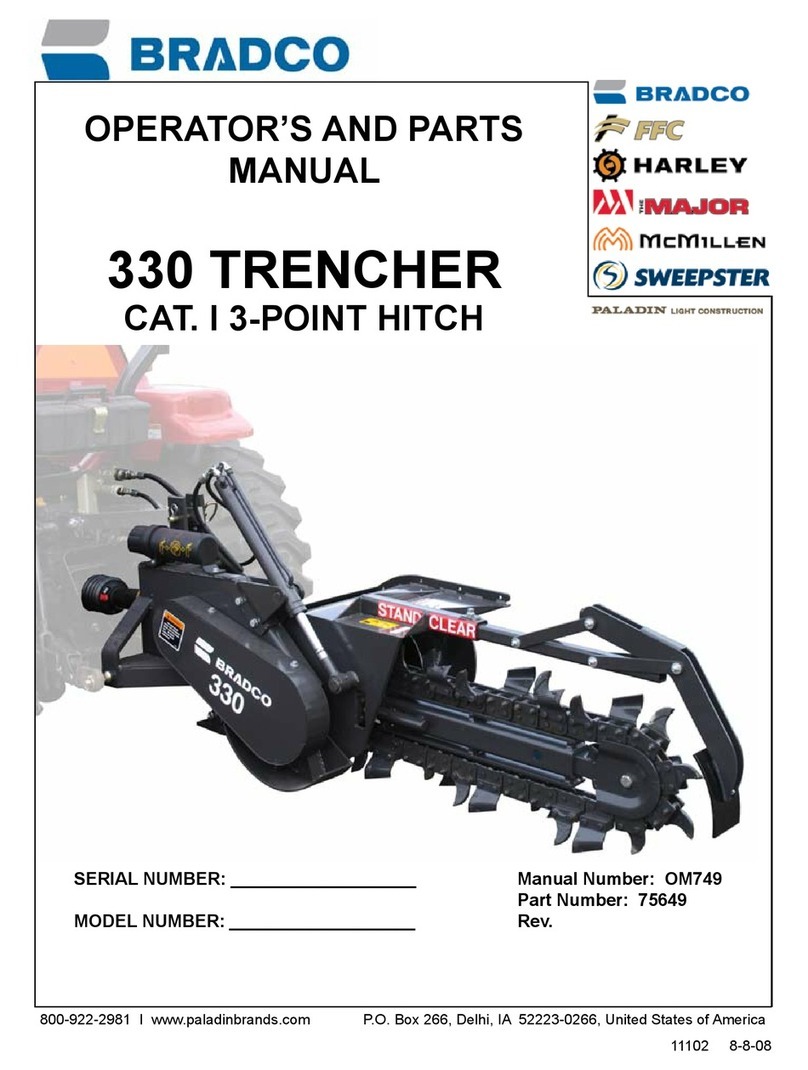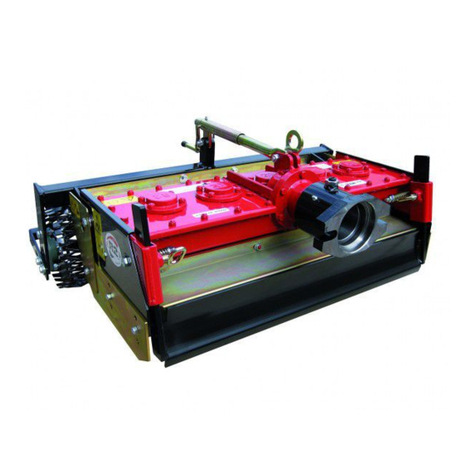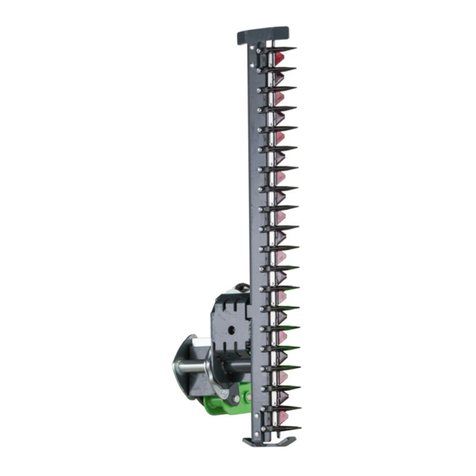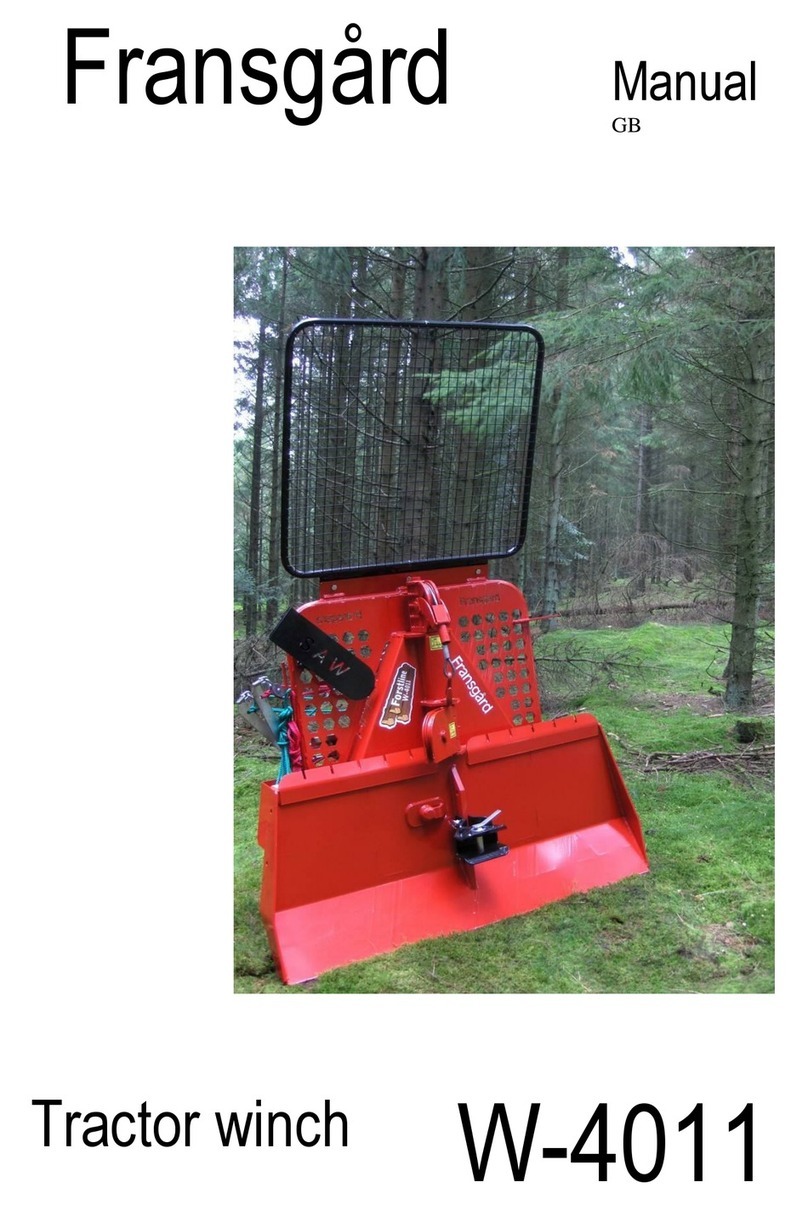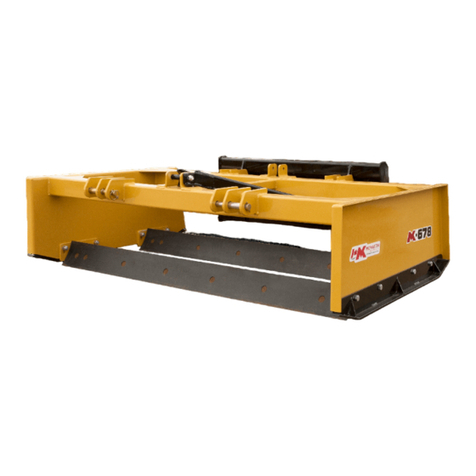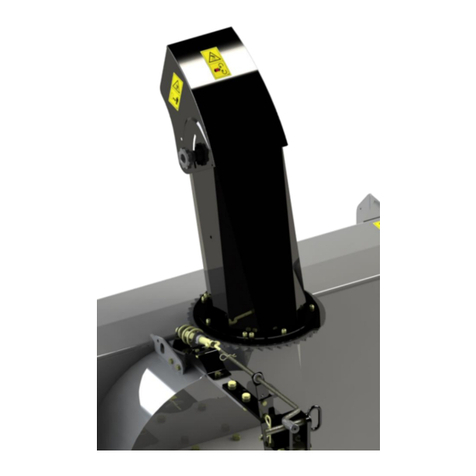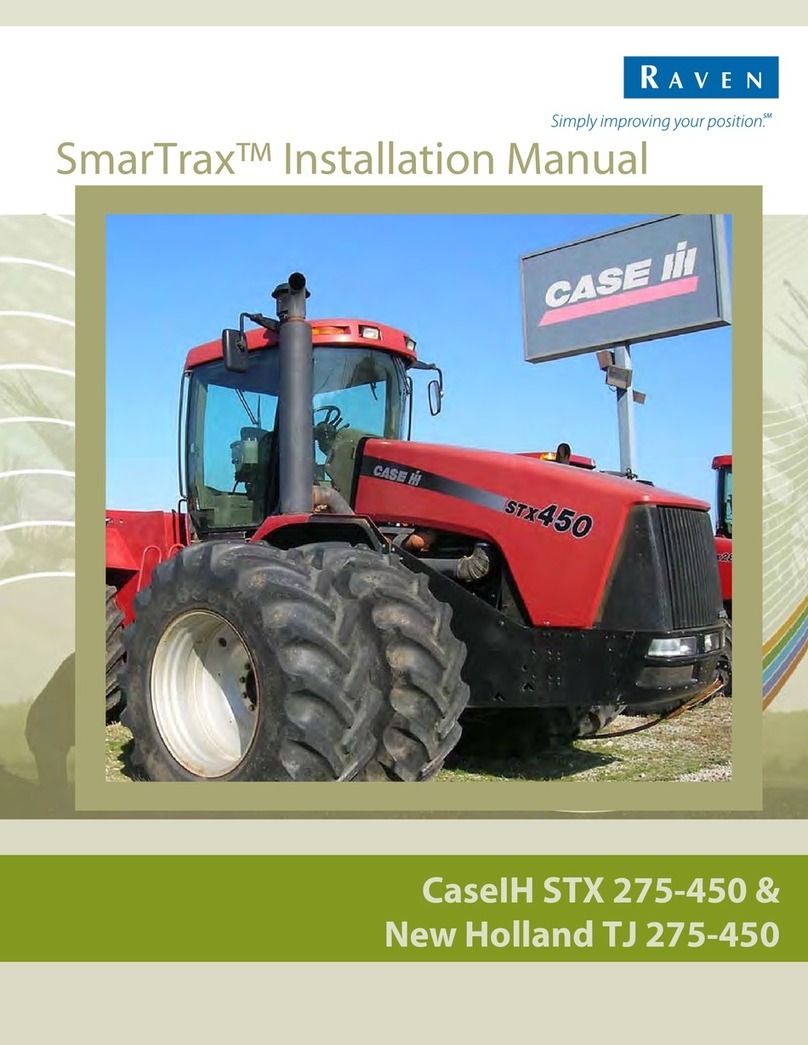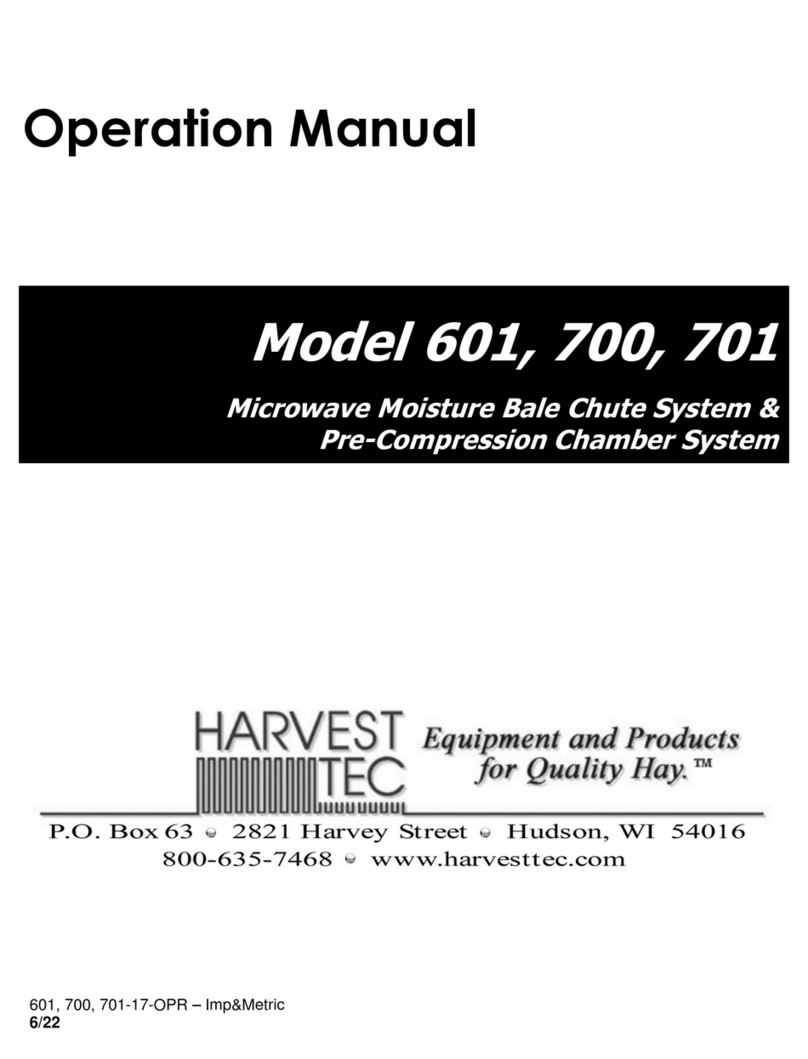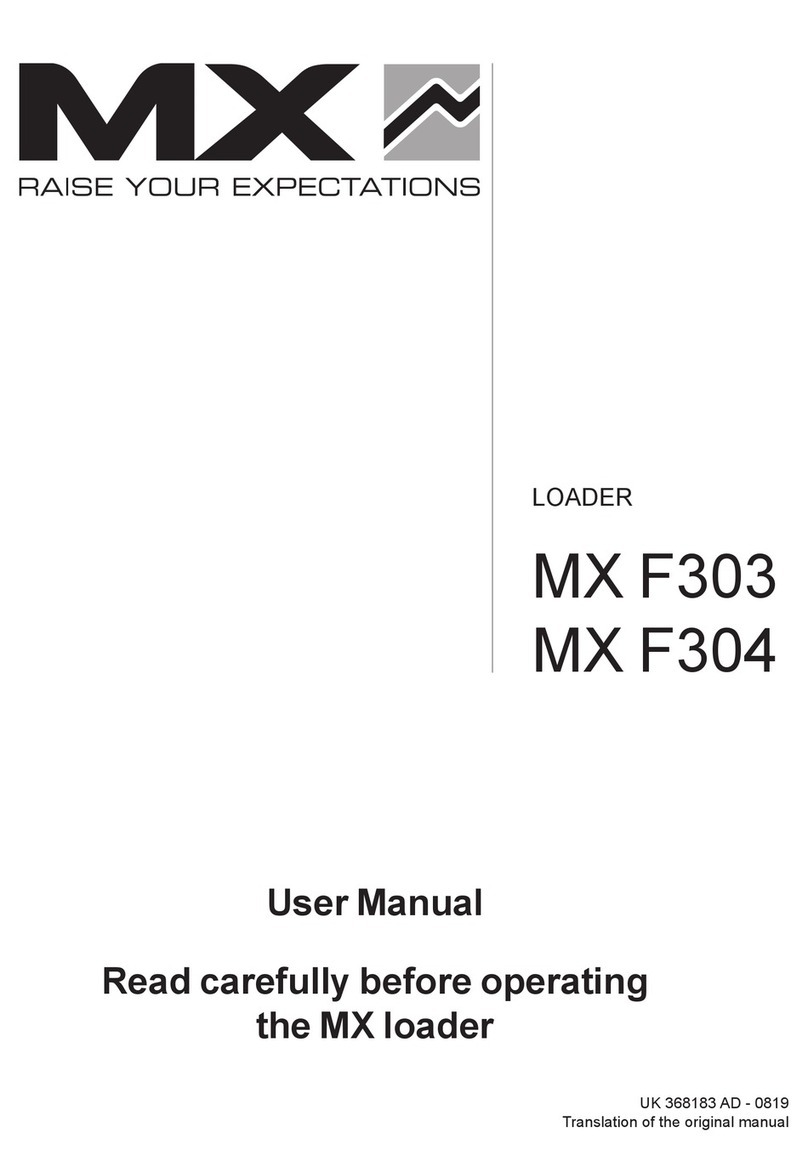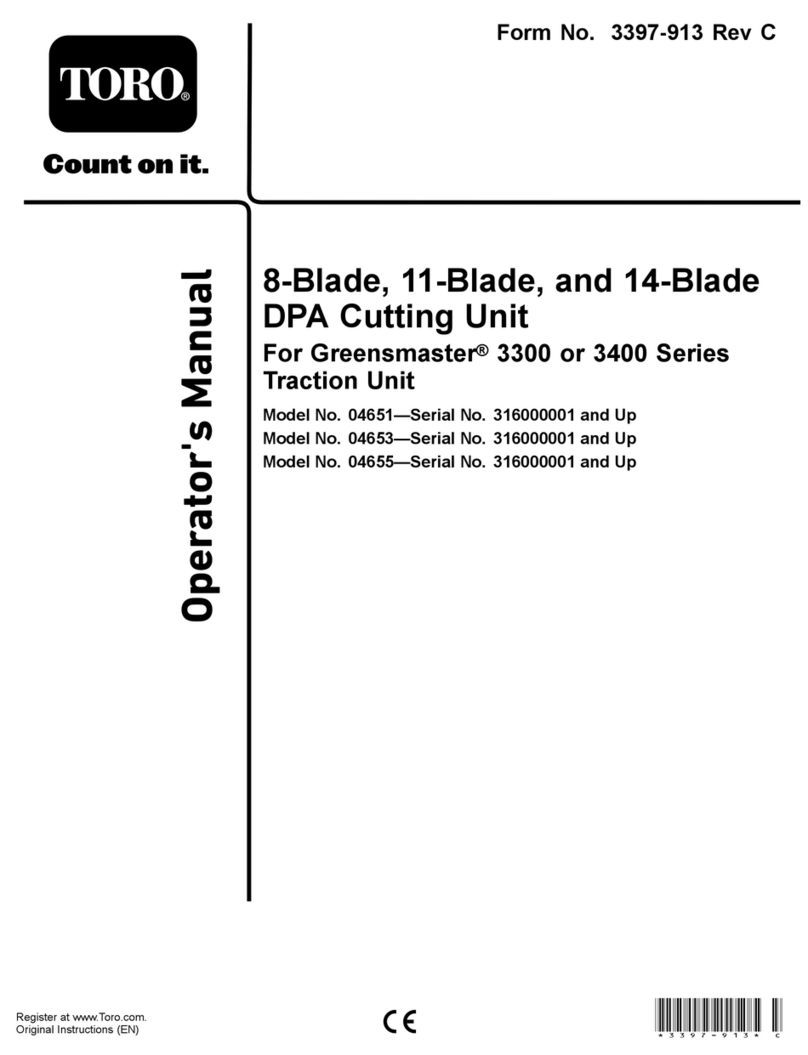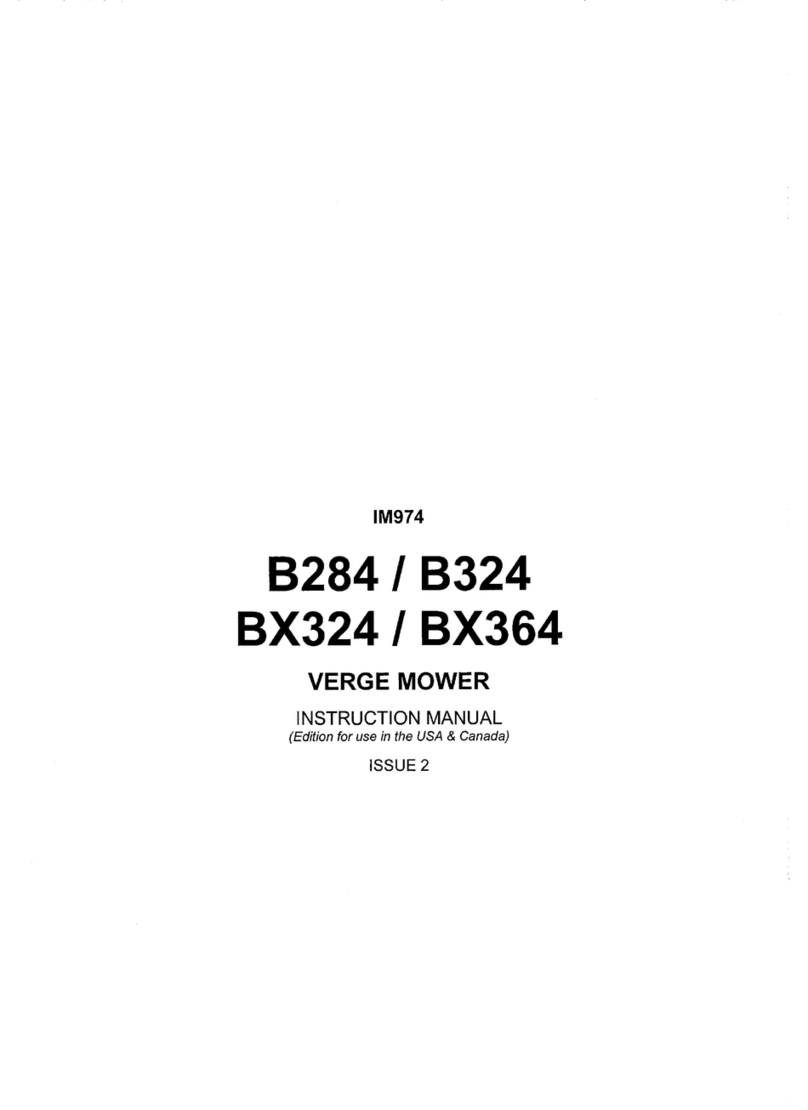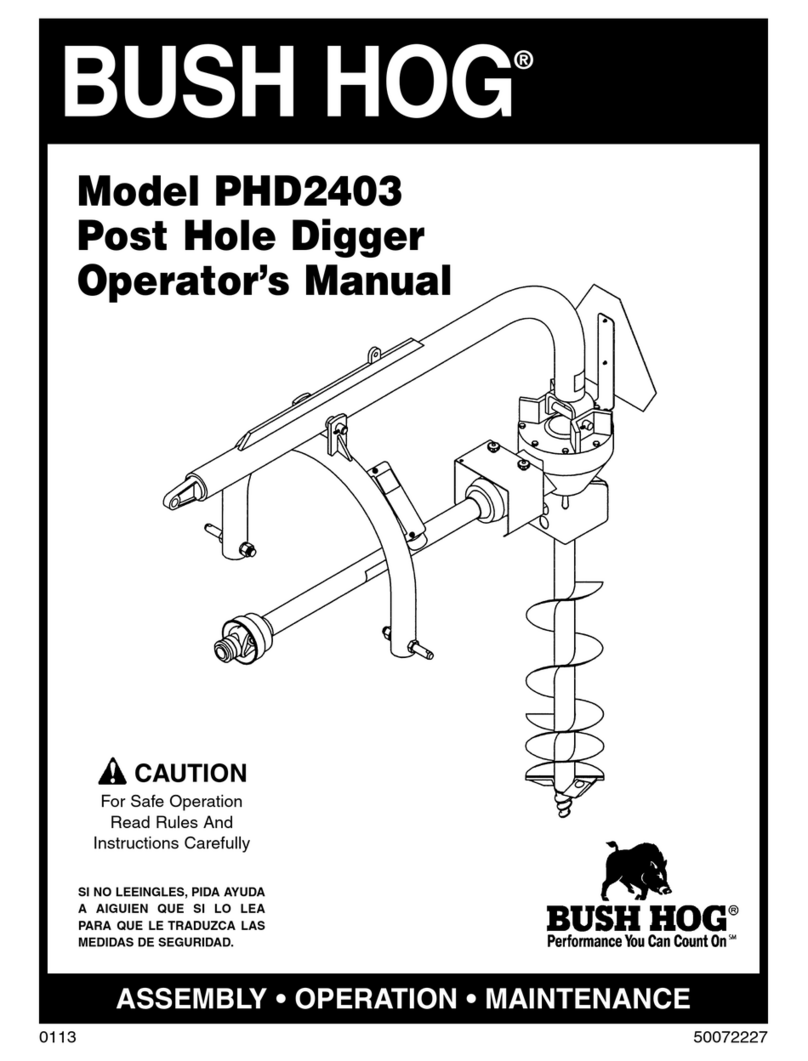Bradco CONTRACTOR 408A BACKHOE Programming manual

CONTRACTOR
BRADCO®
P.O. Box 266 · Delhi, Iowa 52223 USA
(319) 922-2981 ·(800) 922-2981
Fax 319-922-2130
A Division of Attachment Technologies Incorporated
75449
408A
BACKHOE
OPERATOR'S&PARTS
MANUAL
OM549 6737 12-17-99-6
Rev. 5


TABLEOFCONTENTS
408A BACKHOE
6752
12-15-95
TO THE OWNER............................................................................................... A
SAFETYPRECAUTIONS ................................................................................... B
INTERNATIONALSYMBOLS ............................................................................C
PRE-OPERATION ...............................................................................................D
GeneralInformation
PreparingtheTractor
BucketOptions
Backhoe-MajorComponentNomenclature
OPERATINGINSTRUCTIONS .......................................................................... G
GeneralInformation
Controls
BeforeYouStart Digging
BasicDiggingTechnique
SpecialApplications
Transporting
LUBRICATION ...................................................................................................H
MAINTENANCE ................................................................................................. L
BACKHOESTORAGE ....................................................................................... M
TROUBLESHOOTING .......................................................................................N
BOLTTORQUE ................................................................................................. O
PRE-DELIVERYCHECKLIST.............................................................................R
LIMITED WARRANTY .......................................................................................S
BACKHOEASSEMBLY SERVICEPARTSSECTION
MainframeAssembly
Mainframe
SwingPost
SwingCylinder
Stabilizers
Seat
Boom&DipperAssembly
Boom
Dipper
ConsoleAssembly
ValveAssembly
CylinderAssemblies
Swing/Stabilizer/Boom/Dipper/Bucket
HoseAssemblies
StabilizerPadAssemblies
BucketOptions
FirstLineRepairKit
Decals


TO THE OWNER
GENERAL COMMENTS
Congratulations on the purchase of your new backhoe! Your backhoe was
carefully designed and manufactured to give you many years of dependable
service. Your backhoe will require some minor maintenance (such as cleaning
and lubricating) to keep it in top working condition. Be sure to observe all main-
tenance procedures and safety precautions in this manual and on the safety
decals located on the backhoe and on any equipment on which the backhoe is
mounted.
ABOUT THIS MANUAL
Read this manual before using your backhoe. This manual has been designed
tohelpyoutodoabetter,saferjob. Readthismanualcarefully,andbecomefamil-
iarwiththeoperatingproceduresbeforeattemptingtooperateyournewbackhoe.
Remember, never let anyone operate this backhoe without them having
read and completely understand the "Safety Precautions" and "Operating
Instructions" section of this manual , or having them be fully trained by an
experienced, qualified person who has read and completely understands
the "Safety Precautions" and "Operating Instructions" (see sections B and
Grespectively).
SERVICE
Whenservicingyourbackhoe,remembertouseonlyoriginalmanufacturerreplace-
mentparts. Substitutepartsmaynotmeetthestandardsrequiredforsafe,depend-
ableoperation.
Tofacilitateparts ordering,recordthemodeland serialnumberofyourbackhoe in
thespaceprovidedonthispage. This information may be obtained from the
backhoeidentificationplatelocatedontheleftsideofthebackhoeconsole.
MODEL SERIAL NO.
Your parts department needs this information to insure that you receive the
correct parts or attachments for your specific backhoe.
SAFETYALERT SYMBOL
This is the "Safety Alert Symbol" used by this industry. This
symbol is used to warn of possible injury. Be sure to read all
warnings carefully. They are included for your safety and for
the safety of others working around you. 6741
6-16-98-2
AA


SAFETYPRECAUTIONS
BB
TAKE NOTE! THIS SAFETY ALERT SYMBOL FOUND THROUGHOUT THIS
MANUAL IS USED TO CALL YOUR ATTENTION TO INSTRUCTIONS IN-
VOLVING YOUR PERSONAL SAFETY OR OTHERS. FAILURE TO FOLLOW
THESE INSTRUCTIONS CAN RESULT IN INJURY OR DEATH.
THISSYMBOLMEANS:
ATTENTION!
BECOMEALERT!
YOURSAFETYISINVOLVED!
SIGNAL WORDS: NotetheuseofsignalwordsDANGER,WARNING,andCAU-
TIONwiththesafetymessages. Theappropriatesignalwordforeachhasbeen
selectedusingthefollowingguidelines:
DANGER: Indicatesanimminentlyhazardoussituation,whichifnotavoided,will
resultindeathorseriousinjury. Thissignal word is to belimitedtothe
mostextremesituations,typically for machine components
which, for functional purposes, cannot be guarded.
WARNING: Indicatesapotentiallyhazardoussituation,whichifnotavoided,could
resultindeathorserious injury, and includes hazards that are
exposed when guards are removed. It may also be used to
alert against unsafe practices.
CAUTION: Indicatesapotentiallyhazardoussituation,whichifnotavoided,may
result in minor or moderate injury. It may also be used to alert
against unsafe practices.
6621
5-18-95


6. Do not take passengers on the tractor or backhoe. There is no safe
place for a passenger.
7. Use the handholds and step plates when getting on/off the tractor.
Failure to do so could cause a fall.
8. Inspect the tractor before you try to operate the unit. Check for
needed maintenance or repairs and be sure to have them done before
usingtheequipment.
9. Before performing maintenance. Set the parking brake, place the gear
shift lever in neutral, turn off the tractor and remove the key.
10. Wear appropriate clothing such as a hard hat, safety glasses, ear
plugs, etc. Do not wear loose fitting clothing, it could get caught on
theequipment.
11. Never operate or transport unit with covers or shields removed.
12. Never leave tractor running unattended. Follow tractor operator's
manualforcorrect operation.
13. Reduce speed when driving over rough terrain, on a slope, or turning,
to avoid overturning the tractor.
14. Do not smoke when refueling the tractor. Allow room in the gas tank
for expansion. Wipe up any spilled fuel. Secure cap tightly when
done.
15. Do not modify the backhoe in any way. Unauthorized modifications
couldresultinequipmentdamageand/or personalinjury.
16. Lookbeforebacking.
WORKING WITH THE BACKHOE
1. Never operate backhoe by standing up on, or beside the machine.
Operate only from the backhoe seat.
2. Do not lift or carry people on the backhoe, they could fall and be
crushed.
3. Do not adjust relief valve setting. This valve is factory set and should
be adjusted only by a qualified service person. Incorrect valve setting
couldresultinequipmentdamageand/or personalinjury.
4. Check your work area. Avoid hitting overhead electrical wires, under-
ground cables and pipes, fence post, gas lines, etc.
6742
12-13-95
SAFETYPRECAUTIONS
BB

5. Block off work area from all bystanders, livestock, etc. Allow plenty of
room for backhoe reach and swing.
6. When operating on slopes, dig with the backhoe uphill, and avoid full
reach and swinging the backhoe bucket to the downhill side. Tipping
could result.
7. Operate backhoe only from backhoe seat.
8. Use your backhoe only for digging. Do not use it to pull things, as a
battering ram, or attach ropes, chains, etc., to the unit.
9. Never work under raised stabilizers or a raised bucket.
10. Lower stabilizers and bucket when removing backhoe. This will
increase the stability of the unit.
11. Do not dig close to stabilizers, the ground could collapse from under
the backhoe
12. Do not lift loads in excess of backhoe capacity.
13. Always lower the backhoe bucket and stabilizers to the ground, shut
off engine, remove key, and apply the parking brake before leaving
the unit unattended.
TRANSPORTINGTHEBACKHOE
1. Be sure to engage the boom lock and swing lock before transporting
backhoe. Failure to do so could cause an unstable traveling
condition.
2. Allow for height of backhoe when transporting backhoe so as not to
catch unit on low overhangs or wires.
3. When driving on public roads use safety lights, reflectors, Slow
Moving Vehicle signs, etc., to prevent accidents. Check with local
governments for regulations that may affect you.
4. Do not drive close to ditches, excavations, etc., cave in could result.
Drive slow over rough terrain.
5898
9-2-92
SAFETY PRECAUTIONS
BB

MAINTENANCE
1. Never work on equipment while it is running. Block up equipment,
set hand brake, lower bucket and stabilizers, turn off the tractor and
remove the key before performing repairs.
2. Never make hydraulic repairs while the system is under pressure, or
the cylinders are under load. Serious personal injury or death could
result.
3. Observe proper maintenance schedules and repairs to keep unit in
safe working order.
4. Always wear safety goggles or glasses when working on equipment.
5. Use a brass drift and hammer when pressing out pins to prevent the
pin from shattering.
WARNING! Escaping fluid under pressure can have sufficient force
to penetrate the skin, causing serious personal injury.
Fluid escaping from a very small hole can be almost
invisible. Use a piece of cardboard or wood, rather than
hands to search for suspected leaks.
Keep unprotected body parts, such as face, eyes, and
arms as far away as possible from a suspected leak.
Flesh injected with hydraulic fluid may develop gangrene
or other permanent disabilities.
If injured by injected fluid, see a doctor at once. If your
doctor is not familiar with this type of injury, ask him to
research immediately to determine proper treatment.
5899
9-2-92
CARDBOARD
HYDRAULICHOSE
ORFITTING
MAGNIFYING GLASS
SAFETY PRECAUTIONS
BB


CC
INTERNATIONALSYMBOLS
As a guide to the operation of your equipment, various international
symbols have been utilized on the instruments and controls. The symbols
are shown below with an indication of their meaning.
Engine speed Alternator charge
Hours recorded Power take-off (on)
Engine water temperature Power take-off (off)
Lights "Tortoise," slow or minimum setting
Horn "Hare," fast or maximum setting
Engine oil pressure Caution
Hazard warning Control lever operating direction
Axle connect Rock shaft (raised)
Axle disconnect Rock shaft (lowered)
Continuously variable Remote cylinder (extended)
Increase Remote cylinder (retracted)
Decrease Remote cylinder (FLOAT)
Diesel fuel Differential lock
Creeper range Read operators manual
High range Neutral
Low range Forward
Reverse
3869
4-14-94-2

PRE-OPERATION
CONTRACTOR 408A BACKHOE
GENERALINFORMATION
The purpose of this manual is to assist in setting up, operating and
maintaining your backhoe. Read it carefully. It furnishes information and
instructions that will help you achieve years of dependable performance.
Right and left, when referred to in this manual, are determined from
the operator's control position when facing the backhoe.
The illustrations and data used in this manual were current (according
to the information available to us) at the time of printing, however, we
reserve the right to redesign and change the backhoes as may be necessary
without notification.
PREPARINGTHETRACTOR
WARNING! Never let anyone operate this tractor and backhoe without
understanding all of the "Safety Precautions" and "Operating
Instructions" sections of this manual. (See Section B and G
respectively.) Always choose hard, level ground to park the
tractor on and set the brake so that the tractor cannot roll.
BACKHOE
Basic backhoes are shipped complete with bucket. However, several
bucket options are available for the backhoe. Refer to the table for proper
identification of backhoe bucket options.
BUCKETASSEMBLIES
10" #81710
12" #81712
16" #81716
18" #81718
24" #81724
6743
12-13-95
DD

PRE-OPERATION
BACKHOE MAJOR COMPONENT NOMENCLATURE
CONTRACTOR 408A BACKHOE
GENERALINFORMATION
Throughout this manual, reference is made to various backhoe com-
ponents. The purpose of this page is to acquaint you with the various
names of these components. This knowledge will be helpful when reading
through this manual or when ordering service parts.
6744
12-13-95
DD
BOOM & SWING
CONTROLLEVER
CONSOLECOVER
CONSOLE
MAINFRAME
STABILIZER
CYLINDER
DIPPER
SWING POST
BOOMCYLINDER
(INSIDEBOOM)
BUCKET
BUCKETLINK
GROUSERSTABILIZERPAD
STABILIZERARM
BOOM
STABILIZERCONTROLLEVERS
BUCKET&DIPPER
CONTROLLEVER
SWINGLOCK
DIPPERCYLINDER
BUCKETCYLINDER
DIPPER
LINK
SWING
CYLINDER
BOOMLOCK

OPERATINGINSTRUCTIONS
CONTROLS
3958
5-16-94-2
GENERALINFORMATION
Your backhoe is operated by four different control levers. Two are for
stabilizer operation and the other two operate the swing, boom, dipper, and
bucket functions. The information contained below will help you become
familiar with the operation of each control lever. Read the safety precau-
tions (Section B) of this manual before attempting to use the backhoe.
Remember, right and left when referred to on this page are determined by
the operator’s position seated at the backhoe controls facing the bucket.
BACKHOESTABILIZERLEVERS
Moving the stabilizer lever(s) forward will bring the backhoe stabilizer (s)
"Down". Moving the stabilizer lever(s) rearward will raise the backhoe stabiliz-
ers "Up". Both stabilizers are required to be down for proper stability of the
backhoe when in operation.
BOOM/SWINGLEVER(LEFTHANDLEVER)
Pushing the boom/swing lever forward will "Lower" the boom dipstick
and bucket. Pulling the lever rearward will "Lift" the boom, dipstick, and bucket.
Pushing the boom/swing lever to the left will swing the boom and bucket
to the "Left". Pushing the lever to the right will swing the boom, and bucket to
the "Right".
DIPPER/BUCKETLEVER(RIGHTHANDLEVER)
Pushing the dipper/bucket lever forward will move the dipper "Out" or
away from the operator. Pulling the lever rearward will move (crowd) the dipper
"In" or toward the operator.
Pushing the dipper/bucket lever to the left will "Fill" or curl the bucket
(move inward). Pushing the lever to the right will "Dump" the bucket (move
outward).
BOOM/SWING LEFT RIGHT DIPPER/BUCKET
CONTROLLEVER STABILIZERS CONTROLLEVER
GG

OPERATING INSTRUCTIONS
OPERATING TECHNIQUES
ATTACHMENT TYPE BACKHOES
6758
12-18-95
GENERAL INFORMATION
When operating the backhoe, smoothness of technique should be strived
for at all times. Smoothness will come with experience and practice at feathering
the controls. Establish a flowing digging cycle to increase operator efficiency
and save unnecessary wear on the machine.
Observe the following points to obtain the best results and to fully utilize
the digging force of the backhoe.
WARNING! Operate the backhoe only when seated at the controls. Any
other method could result in serious personal injury or death.
Never attempt to drive the tractor when seated at the backhoe
controls.
Check the prospective digging area for hidden utility lines
before operating the backhoe or when in doubt of their loca-
tion, contact the local utility companies. When operating the
backhoe in an area where utilities are expected to be present,
throttle the backhoe down and proceed with caution. If you
feel the backhoe bucket made contact with anything out of the
ordinary, stop digging at once. Have the obstruction checked
by hand. If a utility line has been damaged, contact the af-
fected utility at once.
BEFORE YOU START DIGGING
Before any excavating is started, it is always a good idea to plan out the
job first. Various things need to be considered and taken into account prior to
the actual digging. The operator should inspect the job site and take notice of
any potential hazards in the area. He should have a complete understanding of
the tasks he is expected to perform. Figure out what will be done with the spoil
(excavated soil), will it be used to backfill or be trucked out? What are the soil
conditions like? Will you have to work around others? Etc.
Once you have become familiar with the job site and understand
the job requirements, it is time to set up for the actual digging. Position the
backhoe in such a way as to minimize repositioning the unit and to maximize
digging efficiency. Consider the placement of spoil and position the backhoe to
be able to dig the maximum amount of soil, accurately, while leaving enough
room for the spoil removed to be piled in the desired area.
GG

OPERATINGINSTRUCTIONS
OPERATINGTECHNIQUES
ATTACHMENT TYPE BACKHOES
6753
12-15-95
BEFOREYOUSTARTDIGGING(CONTINUED)
Once the unit is positioned, lower the stabilizers to the ground. The
tires should still be supporting most of the vehicle weight with the stabiliz-
ers relieving only part of the weight, and mainly acting to give the unit a
wider base for increased stability and to keep the unit from moving or
bouncing with backhoe use. The front end loader should also be lowered if
the unit is so equipped. The vehicle should at no time be supported by the
stabilizers and loader with any of its wheels off the ground. Severe damage
to the vehicle could result. When operating the unit on a delicate surface
(such as concrete, or stone work) or on sandy, loose, or soft ground place
plywood under the stabilizers to help distribute the load over a wider area.
GG

6756
12-18-95
OPERATING INSTRUCTIONS
OPERATING TECHNIQUES
ATTACHMENT TYPE BACKHOES
BASIC DIGGING TECHNIQUE
When starting an excavation, make the first cut of each section shallow,
being careful to follow the exact layout of the excavation. The reason for the
shallow cut is to minimize damage to the sod and to facilitate replacement.
These first cuts are also important because they will act as guides for the re-
maining cuts, thus getting the first few cuts as accurate as possible will help in
keeping all future cuts accurate.
When digging with the backhoe, extend the boom, dipper and bucket out,
away from the operator. Lower the boom and dipper to start the digging process.
The bucket teeth should be at a 30° to 45° entry angle. As the digging starts,
curl the bucket until the cutting edge is level with the horizon. Crowd the bucket
in toward the operator working the bucket lever to keep the bucket level. As the
bucket moves toward the operator, manipulate the boom lever to keep the cut
level. At the end of the digging cycle, crowd the dipper out and completely curl
the bucket while lifting it from the excavation. Once you have cleared the exca-
vation, swing the bucket to the spoil pile. Start to dump the bucket before the
pile is approached. Once the bucket is empty, swing the unit back to the exca-
vation, positioning the bucket and dipper for the next cut in the process. The
whole digging process should be one smooth cycle that is repeated until the
excavation is completed.
When the excavation has been dug to within six inches of the finished
bottom, clear and touch up the sides of the excavation. Use the flat sides of the
bucket to scrape off any high spots. Dislodge any exposed rocks if they seem
loose. When finishing walls, finish the far wall by curling the bucket out, crowd-
ing the dipper out, and forcing the bucket down. To finish the closest wall, lift the
bucket up and curl it in.
GG

OPERATING INSTRUCTIONS
OPERATINGTECHNIQUES
ATTACHMENT TYPE BACKHOES
BASICDIGGINGTECHNIQUES(CONTINUED)
6757
12-18-95
Once the sides are cleaned up, finish grading the bottom of the exca-
vation. This is done by making the remaining cuts long and shallow, con-
centrating on making them level and smooth. Remove any remaining spoil.
Check the excavation bottom for depth and levelness, making any adjusting
cuts as needed.
The basic steps just listed at the same regardless of the excavation.
All other digging jobs are simply variations of this basic procedure. Remem-
ber to make your cuts in smooth cycles. This will reduce operator fatigue
and machine wear while increasing productivity and efficiency.
SPECIALAPPLICATIONS
TRENCHING BETWEEN A BUILDING AND AN OPEN EXCAVATION
Start the trench at the building and trench toward the open excava-
tion. Dig toward the open excavation until there is just enough room to
move the unit out from between the trench and open excavation.
GG
Table of contents
Other Bradco Tractor Accessories manuals
Popular Tractor Accessories manuals by other brands
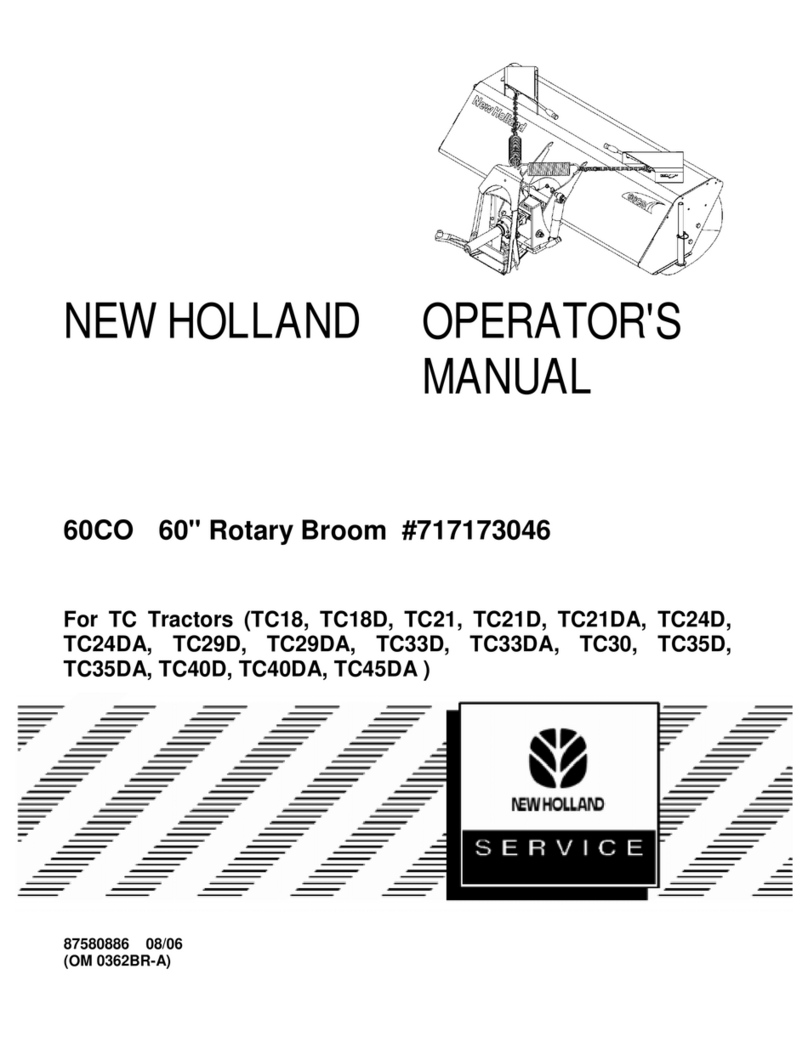
New Holland
New Holland 717173046 Operator's manual
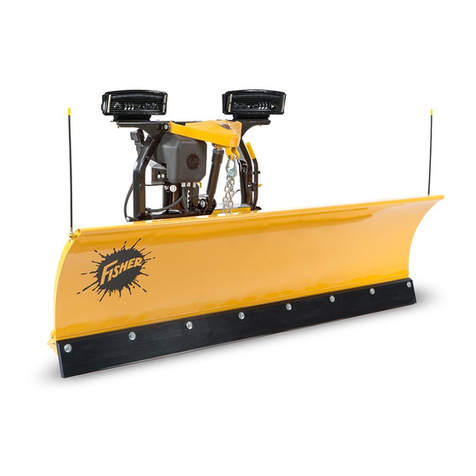
Fisher
Fisher HS installation instructions
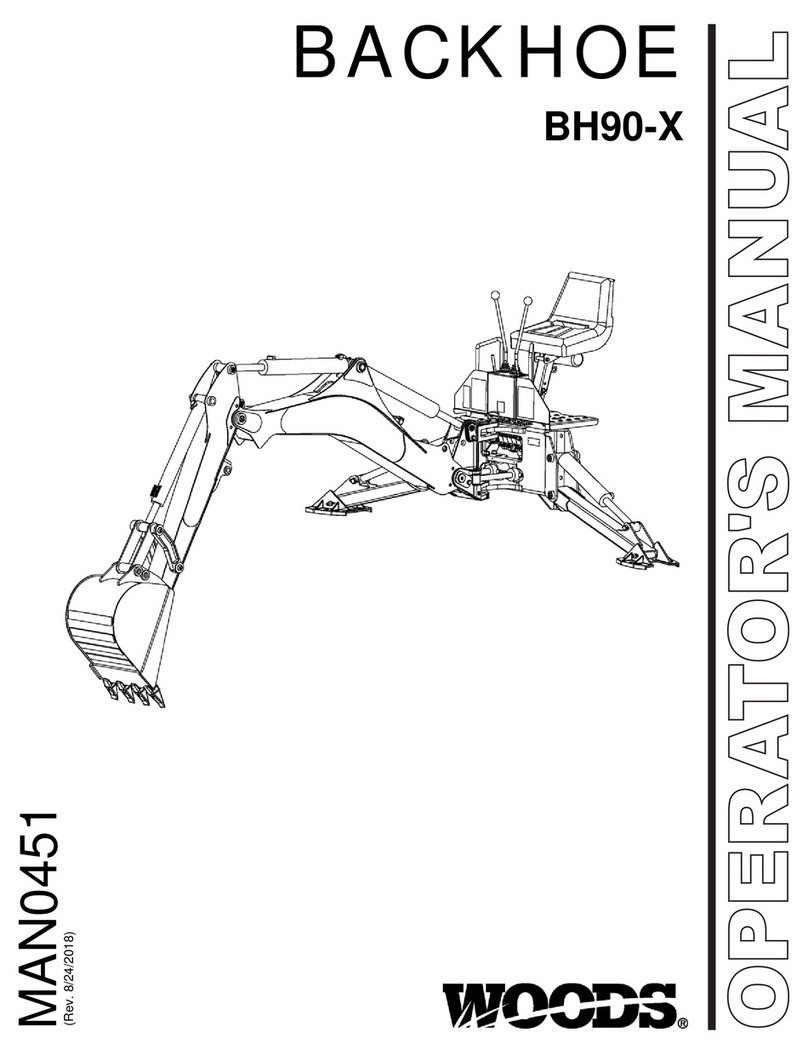
Woods
Woods BH90-X Operator's manual
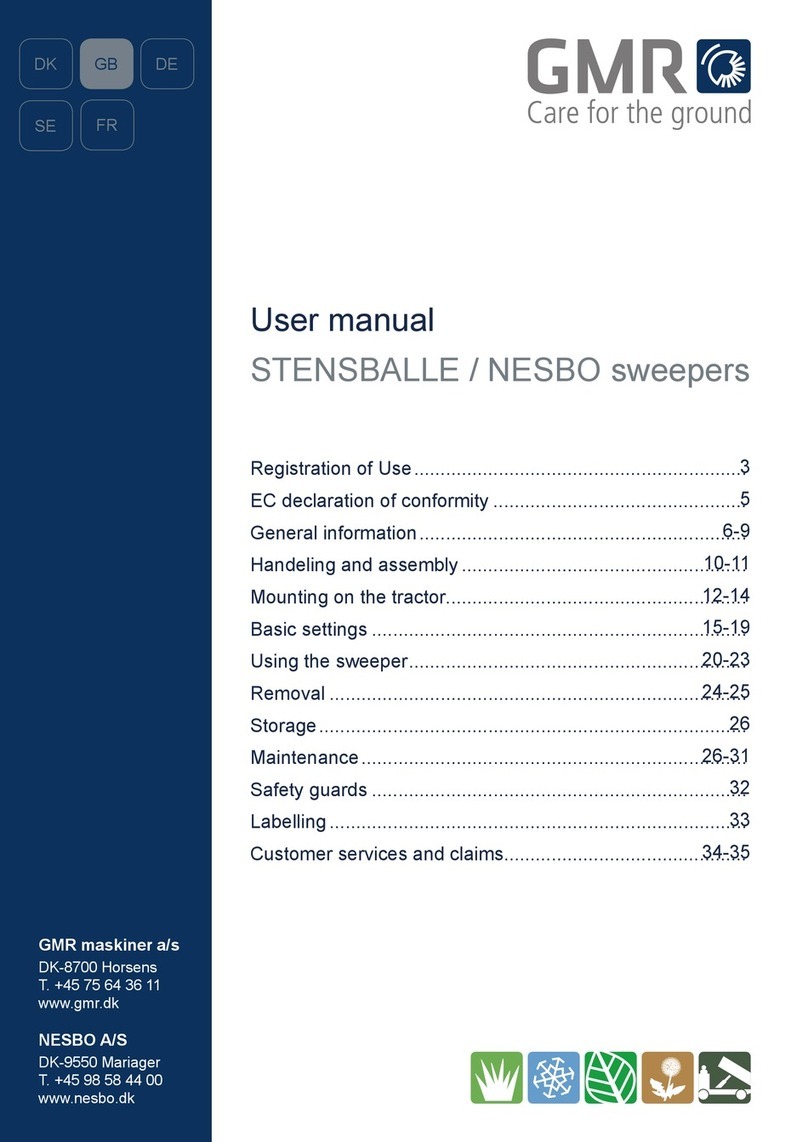
GMR
GMR STENSBALLE/NESBO FF/LA user manual
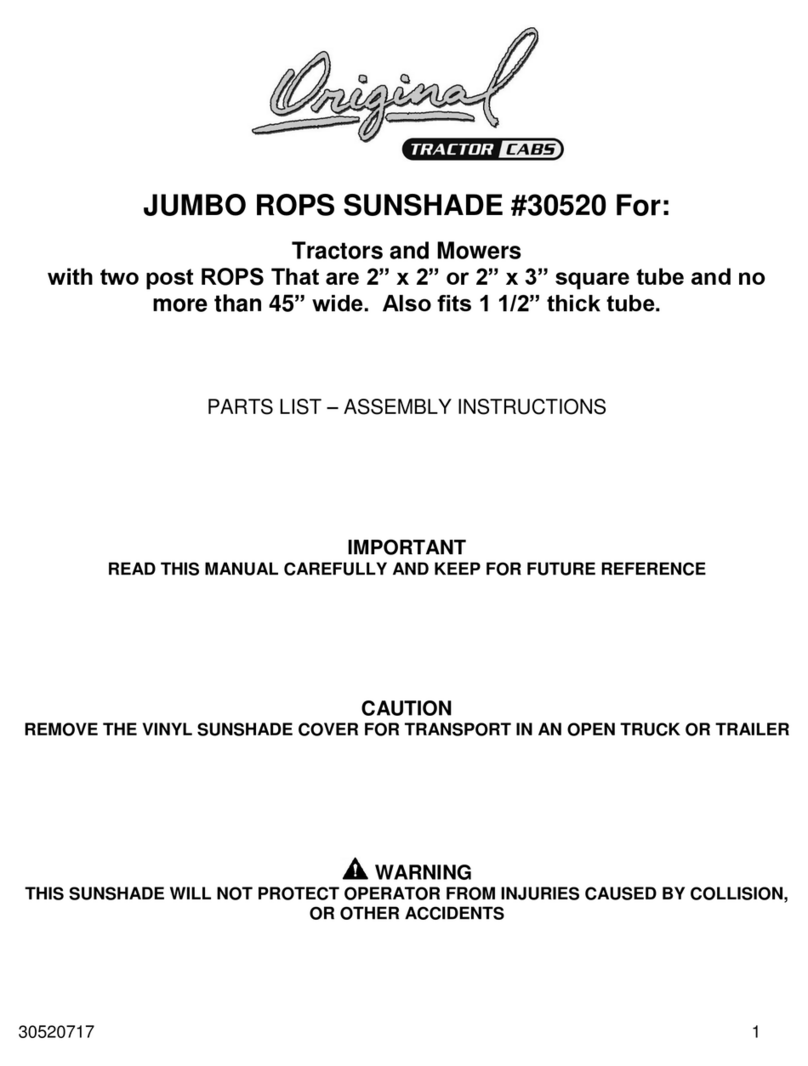
Original Tractor Cabs
Original Tractor Cabs 30520 Assembly instructions
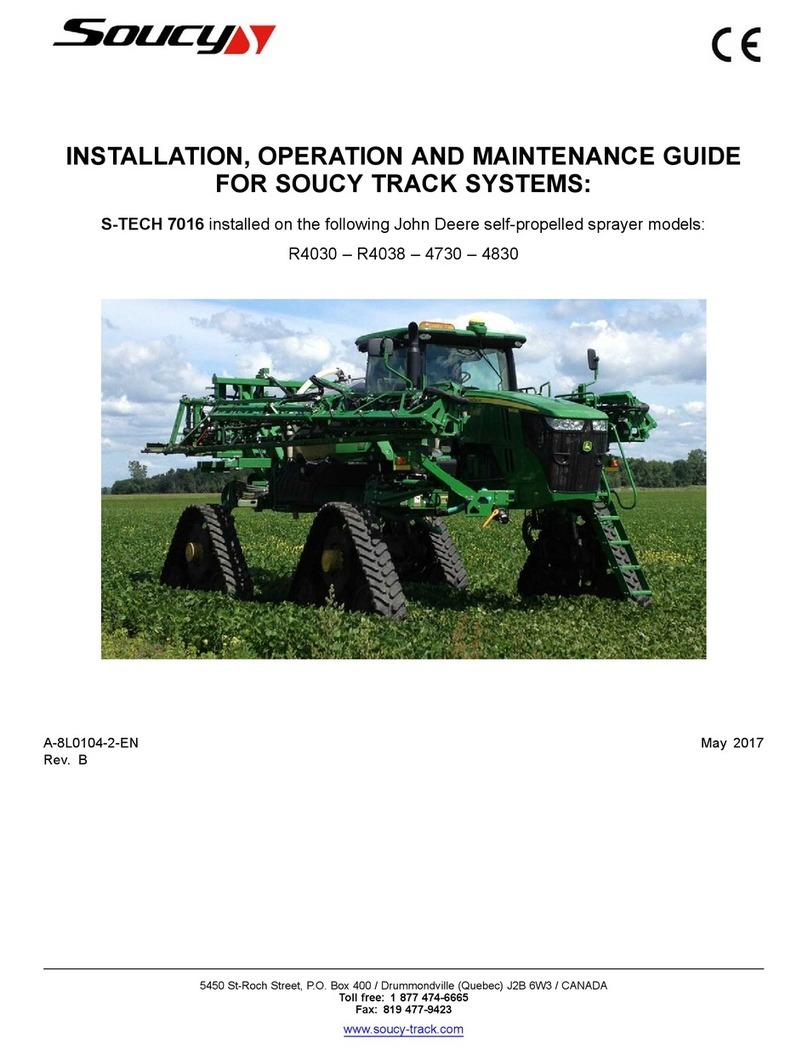
Soucy
Soucy S-TECH 7016 Installation, operation and maintenance guide
